No fragmentation - Windows 10 Anniversary now on 75% of all Windows 10 PCs
The latest data shows signficant deployment of the Windows Anniversary Update by Microsoft
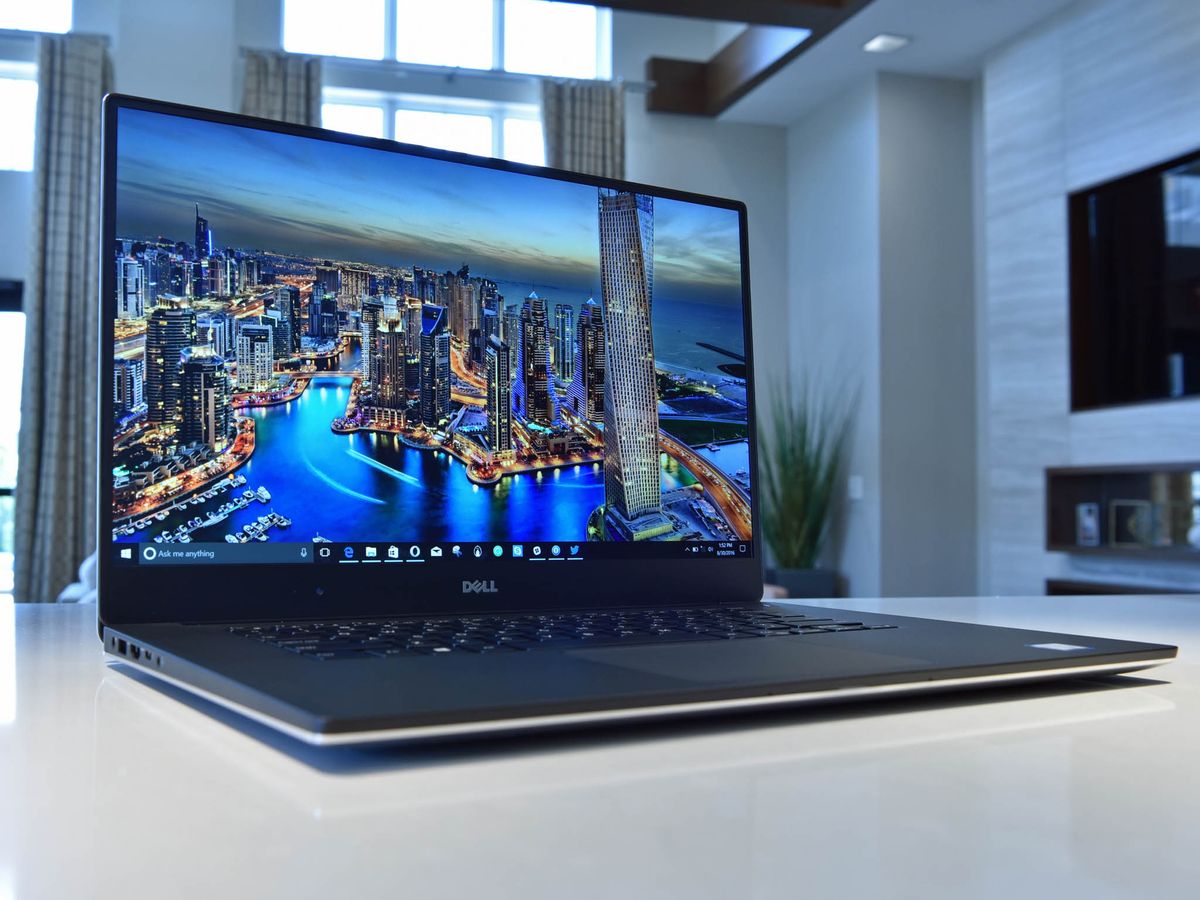
This month's AdDuplex numbers shed some light on how the Windows 10 Anniversary Update is going for both PC and Mobile.
Anniversary Update explodes on PC
The last time we checked in September the Anniversary Update (1607) was only on 1/3 of all Windows 10 PCs, which was itself a doubling from the prior month. Microsoft noted it was doing a slow rollout of the update to catch any issues before they affected millions and that seems to be paying off.
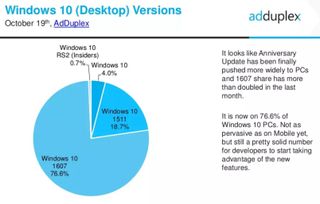
Now, however, the company is opening the spigot on updates as now 76.6 percent of all Windows 10 PCs are on the Anniversary Update. That's also good news for developers who can now target their apps with new Anniversary Update features without leaving many users behind.
Interestingly, new PCs like the HP Spectre x360 that went on sale this week still ship with Threshold 2 (1511) and do not automatically get the Anniversary Update (they will in November). That means some of these numbers could wax and wane depending on PC sales too.
Anniversary Update on Mobile is nearly complete
The news for Mobile had always been better for Windows 10 regarding OS updates and avoidance of fragmentation. Last month, Windows 10 Mobile Anniversary Update was at 82 percent, and just a few weeks later it's gained a little to hit 85 percent.
Add in Redstone 2 (Fast Ring Insiders), which accounts for 5.6 percent of users and 90 percent of all active Windows 10 Mobile devices are on the Anniversary Update or later. That leaves 9.5 percent on 1511.
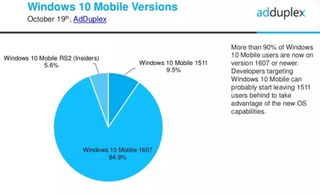
Again, those numbers are good for developers who want to use features found in the Anniversary Update.
Get the Windows Central Newsletter
All the latest news, reviews, and guides for Windows and Xbox diehards.
Nonetheless, it should be noted that out of all Windows phone users (Windows Phone 8, 8.1 and 10) Windows 10 Mobile still only accounts for 14 percent making them niche users in a niche market.
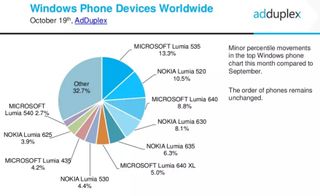
As expected, there are no signs of growth or adoption of new Windows 10 Mobile devices.
AdDuplex does note the HP Elite x3 is now ranked #36 of all Windows phones. However, that device is not yet deployed in enterprise as companies are in the early stages of piloting and field testing the three-in-one. IT departments can take many months to approve a rollout of new technology, so do not expect much on that front until early 2017.
HP is still crushing it in the PC market
HP maintains the same #1 spot for PC manufacturers with 22 percent of the market, virtually unchanged from last month. The bigger news is Lenovo has tied Dell for the distant second place (both with 11.6 percent each).
Asus and Acer both trail at 11 and 10 percent, respectively. Microsoft is just 3 percent with its Surface brand reaffirming how their entry into the high-end market has not significantly affected other OEMs.
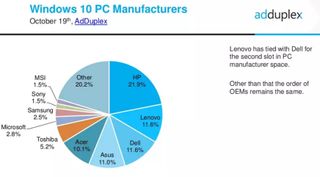
HP is now just launching their revamped Spectre x360 Ultrabook and numerous other PCs for the holiday season. Dell, meanwhile, is refreshing its killer XPS 13 line with Kaby Lake and a few other modest improvements.
We have the Spectre x360 in the house now and will be reviewing the device in the coming week (Spoiler: it's fantastic).
About AdDuplex
The numbers from AdDuplex are collected through their in-app advertising that is prevalent in over 5,000 apps in the Windows Store. That data serves as an important metric within the Windows Phone ecosystem. The full AdDuplex report for October will be posted on their blog at https://blog.adduplex.com/ on Monday (October 24 ). You can view all our previous AdDuplex Monthly Report analyses here.

Daniel Rubino is the Editor-in-chief of Windows Central. He is also the head reviewer, podcast co-host, and analyst. He has been covering Microsoft since 2007 when this site was called WMExperts (and later Windows Phone Central). His interests include Windows, laptops, next-gen computing, and wearable tech. He has reviewed laptops for over 10 years and is particularly fond of 2-in-1 convertibles, Arm64 processors, new form factors, and thin-and-light PCs. Before all this tech stuff, he worked on a Ph.D. in linguistics, performed polysomnographs in NYC, and was a motion-picture operator for 17 years.